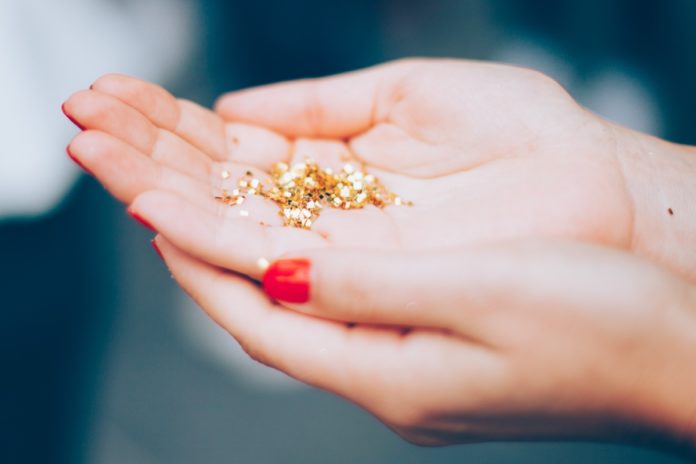
As if 2020 hasn’t handed us enough heavy blows, along comes a pill that will be especially hard for Key Westers to swallow. Friends, this won’t be easy, but we have to talk about … glitter. Sadly, the world is realizing that our sparkletastic standby is classified as a microplastic.
Microplastics are exactly what they sound like — minuscule bits of plastic that find their way into the soil and water, wreaking particular havoc on oceans and aquatic life. This form of pollutant is divided into two categories: plastic products such as bottles that eventually break down to sand-sized particles, and microplastics that are initially produced as tiny units of waste. The latter has typically been defined as microbeads, those teeny little globs found in scrubs and soaps. In 2018, microbeads in cosmetics were banned in the U.S. and Canada, drastically diminishing this particular subset of waste. Other countries followed suit, giving credence to the concept that these little specks were inarguably detrimental to the environment.
What wasn’t initially considered was the microbead’s fabulous, flashy and flamboyant cousin, glitter. As much as we wish it didn’t, logic follows that if microbeads and microplastics in general have a profound negative effect on the oceans, so does glitter.
So, what exactly is wrong with our shiny little buddy who helps us make Fantasy Fest costumes, holiday decorations and parade signs? Sadly, he’s a bit of a toxic friend.
Glitter is made from a combination of aluminum and polyethylene terephthalate, or PET plastic. The compounds in PET take anywhere from 450 to 1,000 years to break down. As an object specifically designed to be spread and scattered, pieces of glitter are essentially just attractive morsels of pollution, custom-made for distribution into the world at large. Studies have found glitter in core ice samples from the Arctic and in the gastrointestinal systems of creatures ranging from fish to humans. More than 13 million tons of microplastic is embedded in the sea floor. The Geological Society of America has even named Plastiglomerate, the material that results when plastic permanently fuses with natural materials, as an officially recognized element.
While glitter is admittedly just one of many environmental threats, it stands out as a fairly easy one to reevaluate. A couple years ago, Lush Cosmetics led the improvement movement by replacing plastic glitter in its products with shimmers and sparkles created from mica, starch and other mineral bases. More recently, several major retailers in the UK announced that they would forgo glitter this holiday season as an element in wrapping paper and decorative items. Many of those companies have also announced that the move would extend beyond the new year, becoming corporate policy and setting a strong precedent for other retailers to follow.
But, but, it’s just so … pretty! Yes, glitter is undeniably magical. Fortunately, the glitter-enamored community is busy developing alternatives to ensure we don’t lose our trademark sparkle.
Leave it to South Florida to lead the charge. Today Glitter is a Miami-based company that has engineered what it calls “bio-glitter.” The shimmery biodegradable material is created by replacing PET with eucalyptus cellulose, resulting in a lustery rainbow array of colors. EcoStardust, whose hashtag is #glitterwithoutthelitter, produces a similar plant-based product sold as loose glitter, or incorporated into bath and cosmetic products. Eco Glitter Fun utilizes bio-glitter and partners with brands and retailers worldwide to help push the eco-friendly option to a broader audience. If you’re watching your spending in the new year, there are also some DIY solutions, including a clever, and Instagram-popular, lifehack that involves using a shaped hole punch to create little confetti pieces from leaves and other natural materials.
So, by all means, keep the sparkle and shine on, my bright little parade-happy friends! But please consider the impact and check out the alternatives.




















